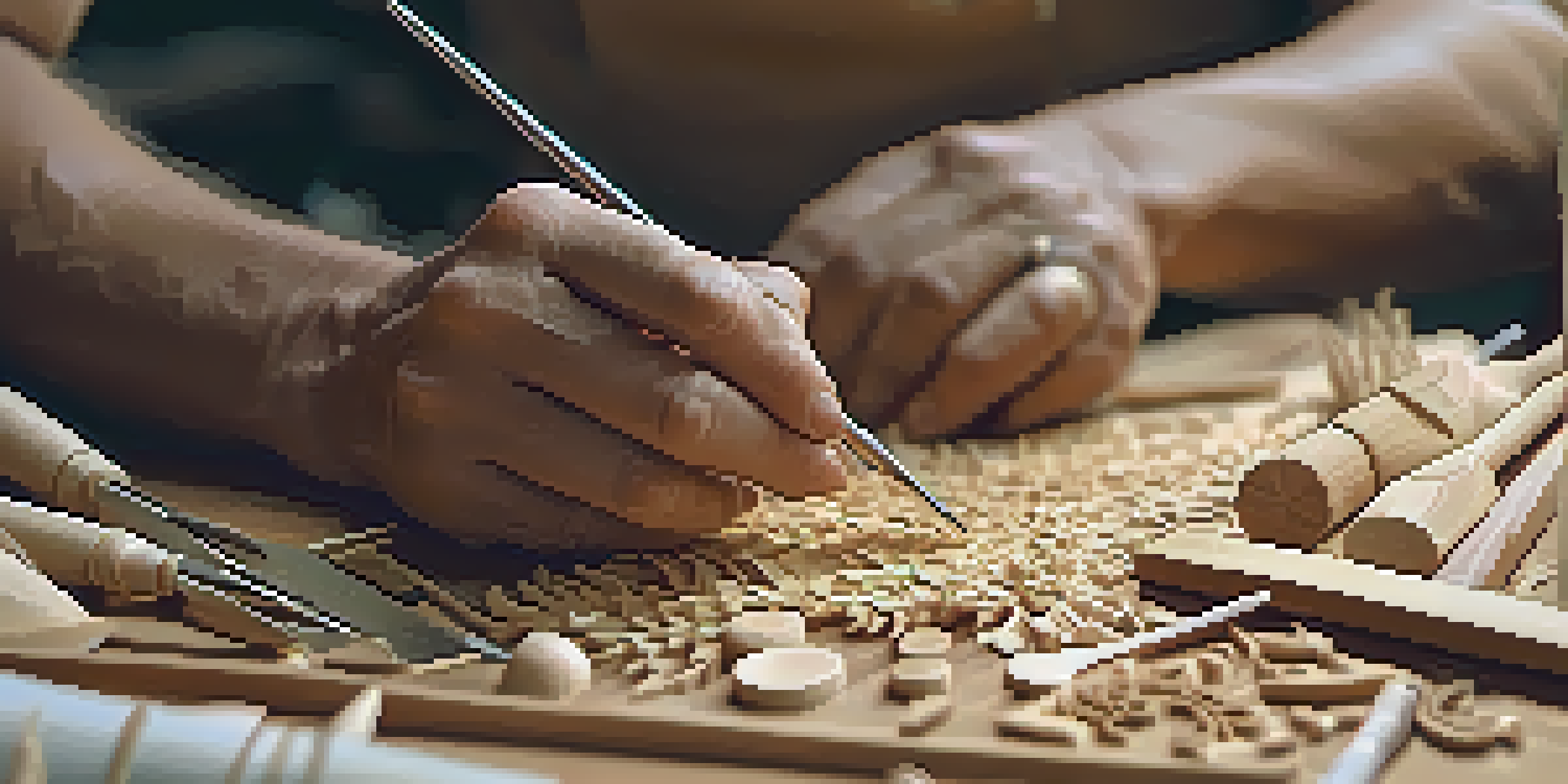The Importance of Precision Carving in Artifact Restoration

Understanding Precision Carving in Restoration
Precision carving is a meticulous technique used in artifact restoration, involving the careful shaping and detailing of materials. It's essential for preserving the authenticity of historical objects while repairing damage. By replicating original features, artisans ensure that restored artifacts maintain their visual and historical integrity.
The Skills Required for Precision Carving
Restoration specialists must possess a unique set of skills to excel in precision carving. This includes a deep understanding of various materials, such as wood, stone, and metal, as well as the ability to work with intricate tools. The finesse required in this craft often comes from years of practice and a keen eye for detail, as even the smallest misstep can alter the artifact's appearance.
Precision Carving Preserves History
This meticulous technique ensures that restored artifacts maintain their visual and historical integrity.
Importance of Historical Accuracy
Maintaining historical accuracy is a cornerstone of artifact restoration, and precision carving plays a vital role in this process. By closely studying original artifacts, restorers can accurately replicate textures, patterns, and colors, ensuring that the restored piece is true to its origins. This dedication to authenticity not only honors the artifact's history but also enhances its value.
Tools and Techniques Used in Precision Carving
The tools of precision carving vary widely, from chisels and gouges to modern CNC machines. Each tool has its place, allowing restorers to tackle different materials and intricacies. Techniques often involve layering, where restorers build up sections slowly to match the original design, ensuring a seamless integration of new and old materials.
Skills and Tools for Restoration
Restoration specialists require a deep understanding of materials and intricate tools to achieve detailed and accurate repairs.
Challenges Faced in Precision Carving
Restoration projects often come with challenges, particularly when dealing with fragile or damaged artifacts. Finding the right balance between strength and sensitivity is crucial, as overly aggressive techniques can lead to further damage. Additionally, sourcing matching materials that blend well with the original can be a daunting task, requiring creativity and resourcefulness.
Case Studies: Successful Restorations
There are numerous case studies that exemplify the success of precision carving in restoration. For instance, the restoration of ancient wooden sculptures often requires intricate carving to replace missing parts. These projects highlight the transformative power of precision carving, turning damaged relics into stunning displays of craftsmanship and history.
Ethics in Artifact Restoration
Striking a balance between restoration and preservation is crucial to maintain ethical standards and uphold the artifact's true history.
The Ethical Considerations of Artifact Restoration
Ethics play a significant role in artifact restoration, particularly regarding precision carving. Restorers must consider how much intervention is appropriate, as excessive alterations can mislead future generations about the artifact's history. Striking the right balance between restoration and preservation is key to maintaining ethical standards in the field.
The Future of Precision Carving in Restoration
Looking ahead, the future of precision carving in artifact restoration appears promising, especially with advancements in technology. Innovations like 3D printing and digital modeling are complementing traditional methods, allowing for more accurate repairs. As these technologies evolve, they will enhance the capabilities of restorers while preserving the artistry that defines precision carving.